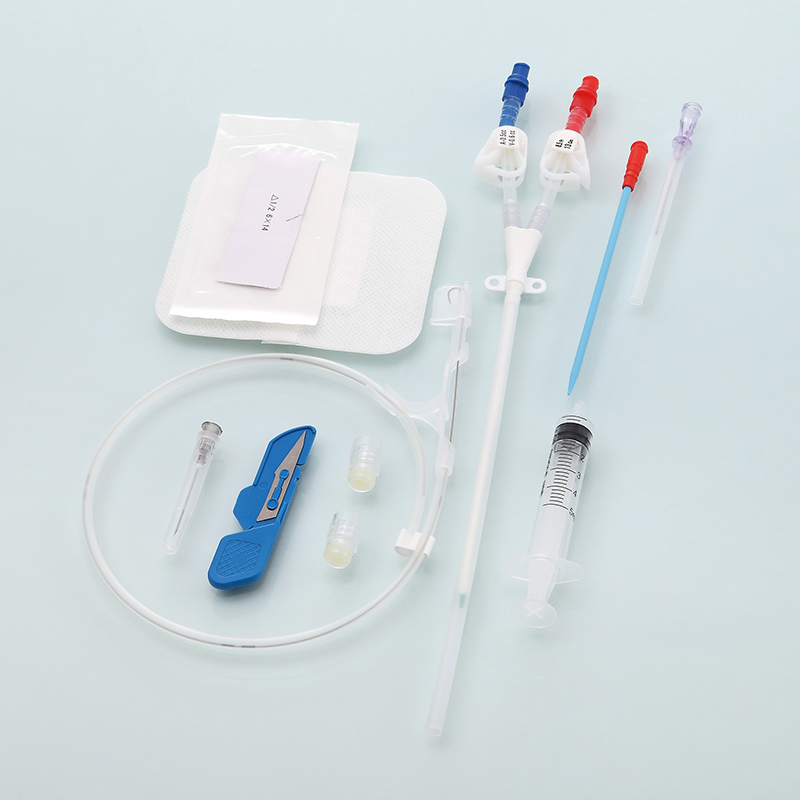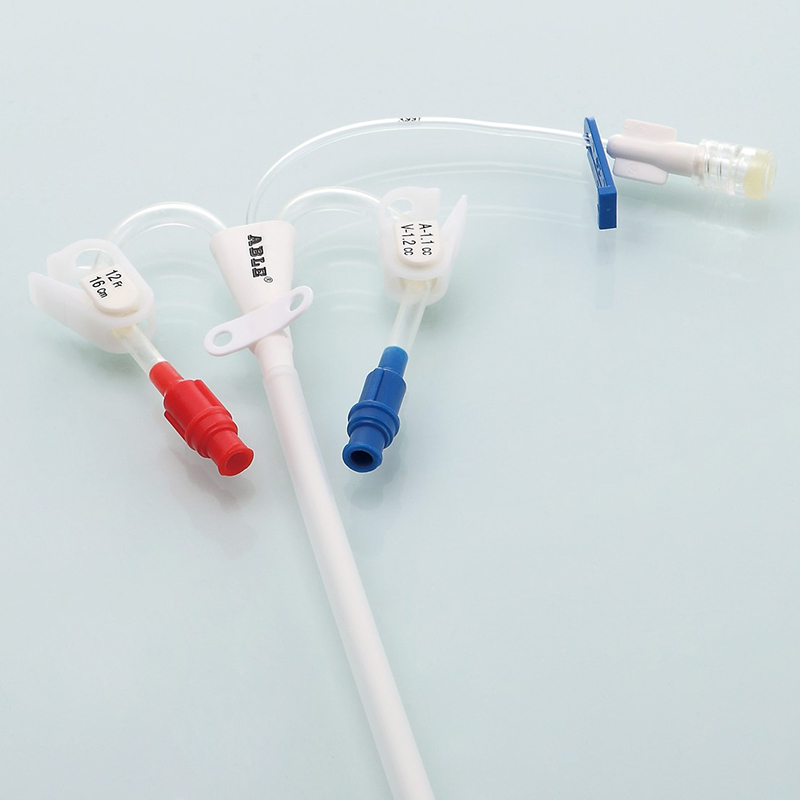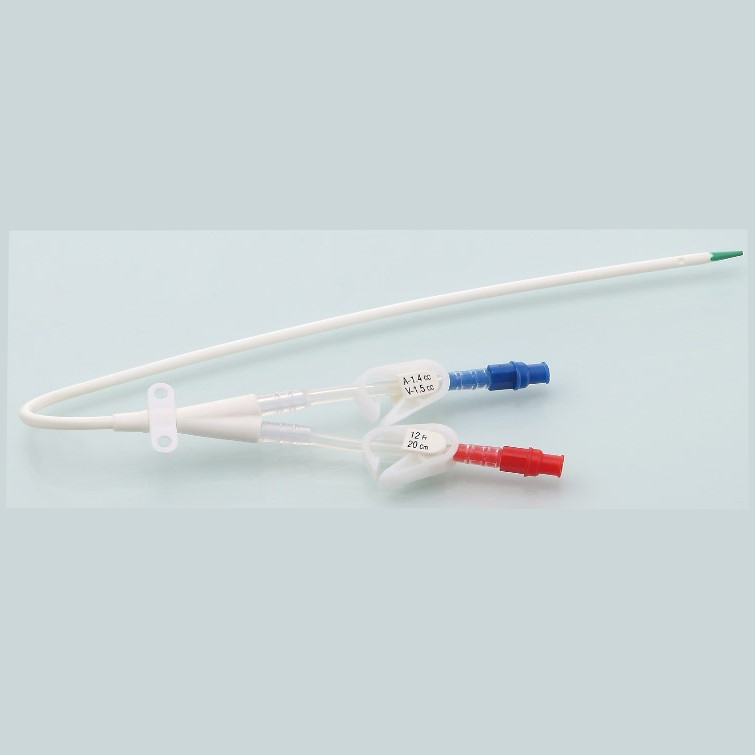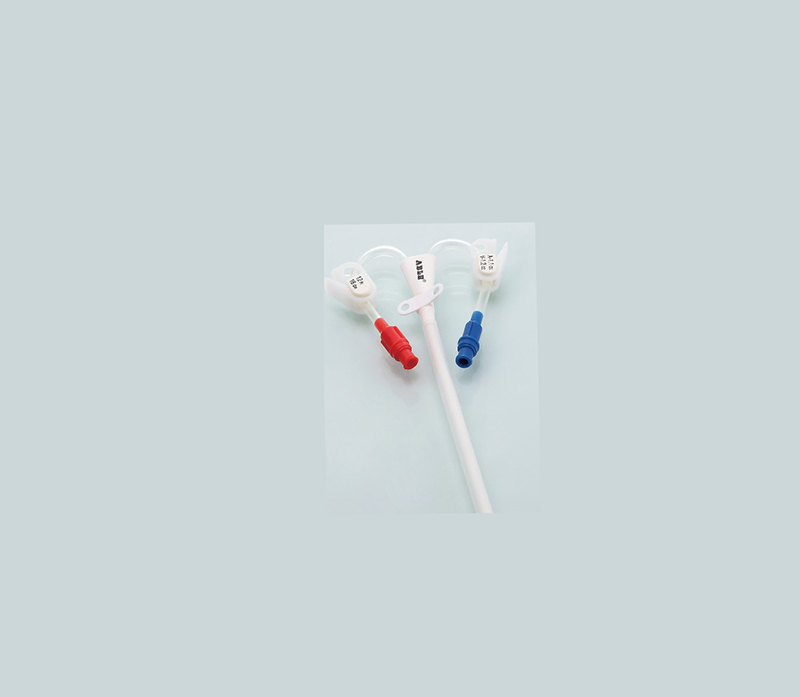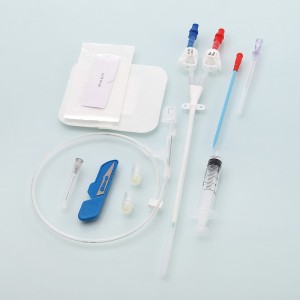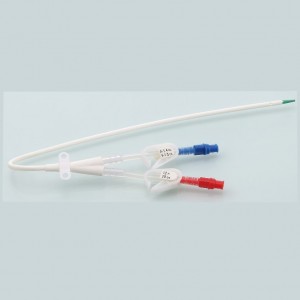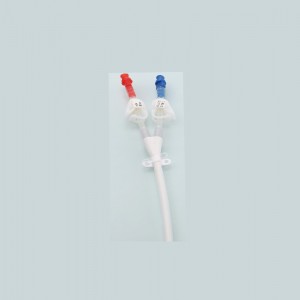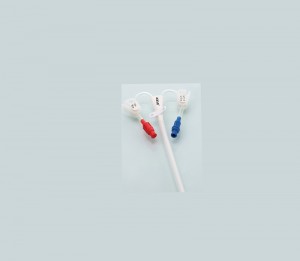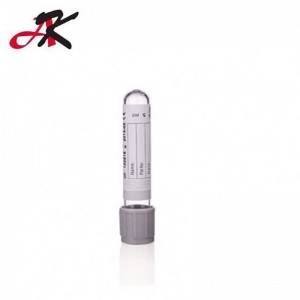High quality dispose medical hemodialysis diagnosis catheter
Insertion operation instruction
Read the manual carefully before the operation. The inserting, guiding and remove of the catheter must be operated by experienced and trained physicians. The beginner must be directed by the experienced.
1. The procedure of inserting, planting and remove should be under strict aseptic surgical technique.
2. To choose the catheter of adequate length to ensure it can reach to the right position.
3. To prepare gloves, masks, gowns, and partial anesthesia.
4. To fill the catheter with 0.9% saline
5. Needle Puncture to the selected vein; then thread the guide wire after assuring the blood is well aspirated when syringe is withdrawn. Caution: The color of the aspirated blood can’t be taken as a proof to judge that Syringe has been punctured to the
vein.
6. Gently thread the guide wire into the vein. Don’t force through when the wire encounters resistance. Withdraw the wire a bit or then advance the wire rotatively. Use ultrasonic to ensure a correct insertion, if necessary.
Caution: The length of guide wire depends on the specificase.
The patient with arrhythmia should be operated by the monitor of electrocardiograph.
